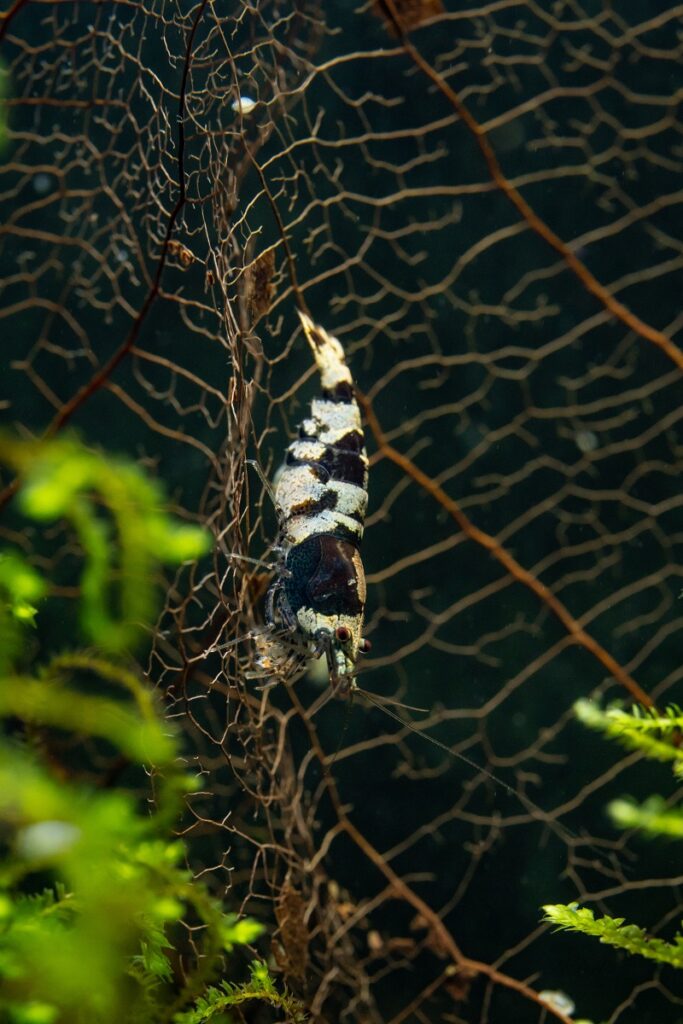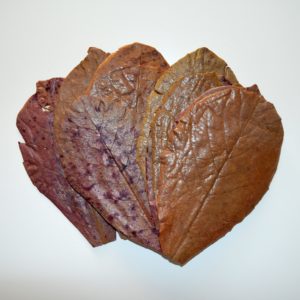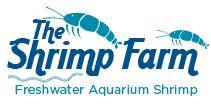Indian Almond Leaves | Uses in the aquarium
If you've been keeping shrimp for a while, you've probably heard of Indian Almond Leaves. Many shrimp keepers swear by them, after all! But what are they? Should you be using these leaves in your shrimp tank?
Let's find out!
Table of Contents
What are Indian Almond Leaves?
The Terminalia catappa is a large tropical tree in the leadwood tree family, it commonly grows mainly in the tropical regions of Asia, Africa, and Australia. This tree is what produces what we have grown to call the "Indian Almond Leaf" in the aquarium hobby.
These leaves have been widely used by aquarist for years for their therapeutic and medicinal purposes. Research suggests that these leaves aid in the process of recreating the natural environment that many of the following species live in: Bettas, Killies, Arowana, Tetra, Dicus, Dwarf Cichlids, Appistogramma, Rasbora, Catfish, and SHRIMP!
Leaf litter for shrimp
The Indian Almond Leaf is said to help in the process of dwarf shrimp breeding by providing a beneficial spot for bacteria to grow that young shrimp can feed on. When the leaves are left in the tank, a multitude of microorganisms will begin to colonize the leave and break it down.
These microorganisms create a biofilm, which is the preferred food source for shrimp, especially shrimplets. The Indian Almond leaf also release compounds that have anti-fungal and anti-bacterial properties. This helps the shrimp fight off parasites and other problems.
The leaf can be left in the tank until it is fully broken down. Most often the stem is left behind and is the only thing that will need to be removed. Allowing the leaf to break down in the aquarium will have no harmful impacts on your tank.
Did you know? The efficacy of Indian Almond Leaf extract and using these leaves in shrimp feed has been proven in scientific studies in the commercial shrimp breeding sector. For example, black tiger shrimp bred for human consumption had better survival rates when 3.0 mg mL-1 of Terminalia catappa leaf extract was added to their water.
Ikhwanuddin et al., 2014

Why do Indian Almond Leaves work?
A common myth about the Indian Almond Leaf is that their benefits only come from their tannins. This view has been proven to be false. Humic acids, this is including tannins, do offer great benefits. They offer antibacterial properties and are a component in many herbs. Almost any source of tannins will benefit an aquatic environment.
Each leaf litter type offers its own benefits. The leaves from some tree species offer further therapeutic or medicinal properties based on their varying active components. The type, amount, and combination of these components varies widely from species to species.
Analysis of Indian Almond Leaves thus far has revealed flavanoids, isovitexin, vitexin, isoorientin, rutin and triterpenoiods. Further identified are volatile oils, quercetin, corilagin, kamferolphenols, saponin, saponin glycosides, cardiac glycoside, balsam, and squalene. T. catappa leaf tannins include punicalagin, punicalin, geranin, granatin B, tergallagin, tercatain, terflavin A and B, chebulagic acid, and corilagin.
The medicinal properties of T. catappa have been proven repeatedly in scientific studies:
- Anti-inflammatory
- Antiparasite properties, including the eradication of Trichodina, Gyrodactylus sp. and Dactylogyrus sp.
- Antibacterial properties have been proven against many strains, both negative and positive, and T. catappa leaf extracts continue to be explored as an alternative to antibiotics for the food fish industry.
- Scientists have reported antifungal activity against Pythium ultimum, Rhizoctonia solani, Sclerotium rolfsii, and Aspergillus fumigatus. Indian Almond Leaf extract has also been used successfully as an antifungal for Tilapia eggs.
In general, it has been reported by many shrimp keepers to us that the Indian Almond leaf had aided in increased breeding, better vibrant colors, better male/female ratios, and better overall health of shrimp as they rarely die of anything other than old age.
How to use leaf litter
If you are new to using Indian Almond leaves, start slowly with one leaf per 10 gallons, as too many leaves can prove to be toxic. A serious overdose would have to happen, however it is always better to be safe than lose your prized shrimp!
When breeding shrimp, we always use Indian Almond leaves, along with other types of leaf litter like alder cones. We believe it, from our experiences, to aid greatly in the breeding process.
Because we're so crazy about this leaf litter and would love for you to try them, we carry Terminalia catappa leaves in our online shrimp store. You can easily buy Indian Almond Leaves online at The Shrimp Farm!
Frequently asked questions
You can start with one leaf per 10 gallons. Using more is unlikely to cause issues, but it can stain your aquarium water.
Yes, these leaves aren't just for shrimp. They're very popular among Betta keepers, with research suggesting they can have a positive effect on the wellbeing of these fish.
No. Although Indian almond leaves can help support the overall health of your aquarium inhabitants, they don't act as a cure for any type of fish disease. They're also not a replacement for proper aquarium maintenance.
Sources & further reading:
Adding Indian Almond Leaf extract to Betta fish water led to better water quality and more bubble nests: Malawa, S., Nuntapong, N., Suanyuk, N., & Thongprajukaew, K. (2022). Addition of different concentrations of Indian almond (Terminalia catappa) leaf extract to aquarium water resulted in improved water quality and increased bubble nest formation by male Siamese fighting fish (Betta splendens) without having any consistent negative effects on growth metrics and blood chemistry. Aquaculture International, 30(6), 3269-3288.
In vitro tests show efficacy of Indian Almond Leaves against multiple bacteria strains: Chansue, N., & Assawawongkasem, N. (2011). The in vitro antibacterial activity and ornamental fish toxicity of the water extract of Indian almond leaves (Terminalia catappa Linn.). KKU Veterinary Journal, 18(1), 36-45.
Dosing leaf powder at 0.50 g L-1 led to better survival rates in juvenile snakehead fish: Nugraha, F. P., Rahardjo, S., & Saputra, A. (2021). Survival and growth performance of snakehead juvenile (Channa striata) with various dosages of Terminalia catappa leaf powder. Aquaculture, Aquarium, Conservation & Legislation, 14(2), 762-773.
Indian Almond Leaves act as an antibacterial against Aeromonas hydrophila in carp: Maftuch, M., Suprastyani, H., Sanoesi, E., Putra, G. A., Putra, M. F., & Prihanto, A. A. (2018). The Effects of Ketapang (Terminalia catappa) Bark Crude Extract on Inhibition of Aeromonas hydrophila Growth and Blood Cells of the Infected Carp (Cyprinus carpio). Rekayasa, 11(2), 87-94.



 Shrimp
Shrimp Fish
Fish Crab &
Crab & Plants
Plants Foods
Foods Snails
Snails

2 Comments